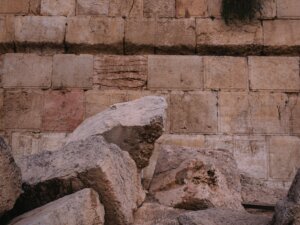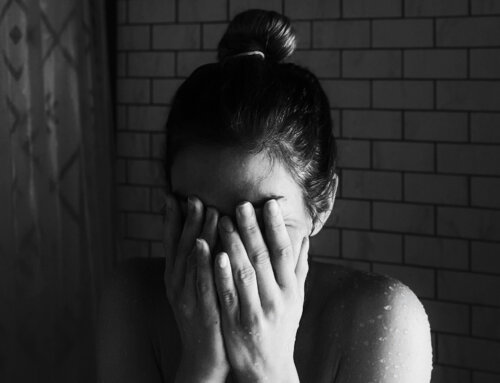 The general laws relating to “tahara” (purity) are complicated, seem far from our lives, and are often hard to understand. The concepts of purity and impurity have nothing to do with physical cleanliness. Furthermore, contrary to popular belief, purity is not connected to whether you are being a good or bad person. Rather, Tahara is a manifestation of a spiritual concept that has to do with being allowed to be in contact with God (represented by the Temple). There was nothing wrong with being impure – one could stay in that state a long time. But if you were going up to the Temple, preparing any sort of food that would be used at the Temple (e.g. wine and oil), or if you were from a Kohein family that might be serving in the Temple, you had to take care that you, and all the food involved, would stay at the highest level of purity.
The general laws relating to “tahara” (purity) are complicated, seem far from our lives, and are often hard to understand. The concepts of purity and impurity have nothing to do with physical cleanliness. Furthermore, contrary to popular belief, purity is not connected to whether you are being a good or bad person. Rather, Tahara is a manifestation of a spiritual concept that has to do with being allowed to be in contact with God (represented by the Temple). There was nothing wrong with being impure – one could stay in that state a long time. But if you were going up to the Temple, preparing any sort of food that would be used at the Temple (e.g. wine and oil), or if you were from a Kohein family that might be serving in the Temple, you had to take care that you, and all the food involved, would stay at the highest level of purity.
At the time of the second Beit Hamikdash, an interesting phenomenon occurred, when suddenly there was an upsurge in the number of people who were strict about practicing the laws of Tahara. We find evidence of this in a variety of sources, such as the Tosefta. “Partza Tahara b’Yisrael” – “Purity was rampant within Israel” (Bavli Shabbat 13a) – suddenly everyone was practicing purity. And not just in the Temple. The rules concerning Koheinim and what was needed in the Temple were extended to private homes and to everyday life. These practices were particularly spread among the “Chaverim,” who took care to purify themselves before meals, before learning Torah, and after a burial. Remnants of this continue even nowadays, with things such as washing our hands before eating or after visiting a cemetery.
One archeological find that points to the widespread adoption of Tahara are stone vessels: plates, cups, measuring cups and even some cooking pots. Because stone does not become impure, those practicing tahara often preferred it. This was the original stoneware… Whenever we find a piece of these stone vessels, we know that Jews lived here during the second Temple period.
Archeologists have also found hundreds of mikvaot from this period, evidencing close connection to purity practice (most recently in the area of the Western Wall plaza). Small and large mikvaot were found in basements of houses, near synagogues and also near oil and wine presses. Mikvaot were found in the Bar Kochva caves in the Judean desert, in the luxury palaces of King Herod (whose bathhouses were kosher mikavot) and some were even found adjoining burial caves. In fact, mikvaot have been found in the most amazing places – like the cliffs of Arbel, which has a new trail that you can visit with a “Hanging Mikveh,” a mikveh which is suspended from a cliff.
While the destruction of the Temple might have absolved the need for this high level of purity, the families of Koheinim and others continued observing purity in its highest form, as the finds in Susyia, Tzipori, Masada, and other cities show – a sign of their hope that the Beit Hamikdash would be rebuilt very soon. Even 60 years after the destruction of the second Temple, Jews around Jerusalem were keeping the laws of purity, holding on to that hope. Only after the devastating results of the Bar Kochva revolt, when Jews were banned from living in Jerusalem, did they give up the hope of a quickly rebuilt Temple and the practices of purity – with its daily mikveh use – waned.
One might suggest a parallel between living with the restrictions around Covid and having to abide by the laws of purity. Certainly, Covid made it easier to understand what it would mean to live with the laws of purity and need to be more cautious about what we touch, where we go, what we come in contact with and the need for separation. While we hope that everything Covid-related will soon be behind us, perhaps as a result we can better relate to the way purity laws used to affect people’s lives on a daily basis during the times of the Temple. We pray that the laws of Tahara will once again be relevant to all Jewish people, when they come to visit the rebuilt Temple in Jerusalem.
Margalit Frydman is a certified and experienced tour guide, an expert in guiding multigenerational groups from all backgrounds. Her specialty is in bringing History and Jewish sources alive. She is the creator of Parashat Derech – Bar and Bat Mitzva family learning and touring based on the Parasha content
0544844913
Margalit Frydman is a certified and experienced tour guide, an expert in guiding multigenerational groups from all backgrounds. Her specialty is in bringing History and Jewish sources alive. She is the creator of Parashat Derech – Bar and Bat Mitzva family learning and touring based on the Parasha content
0544844913
margalitf.tours@gmail.com
www.margalitours.com








Leave A Comment